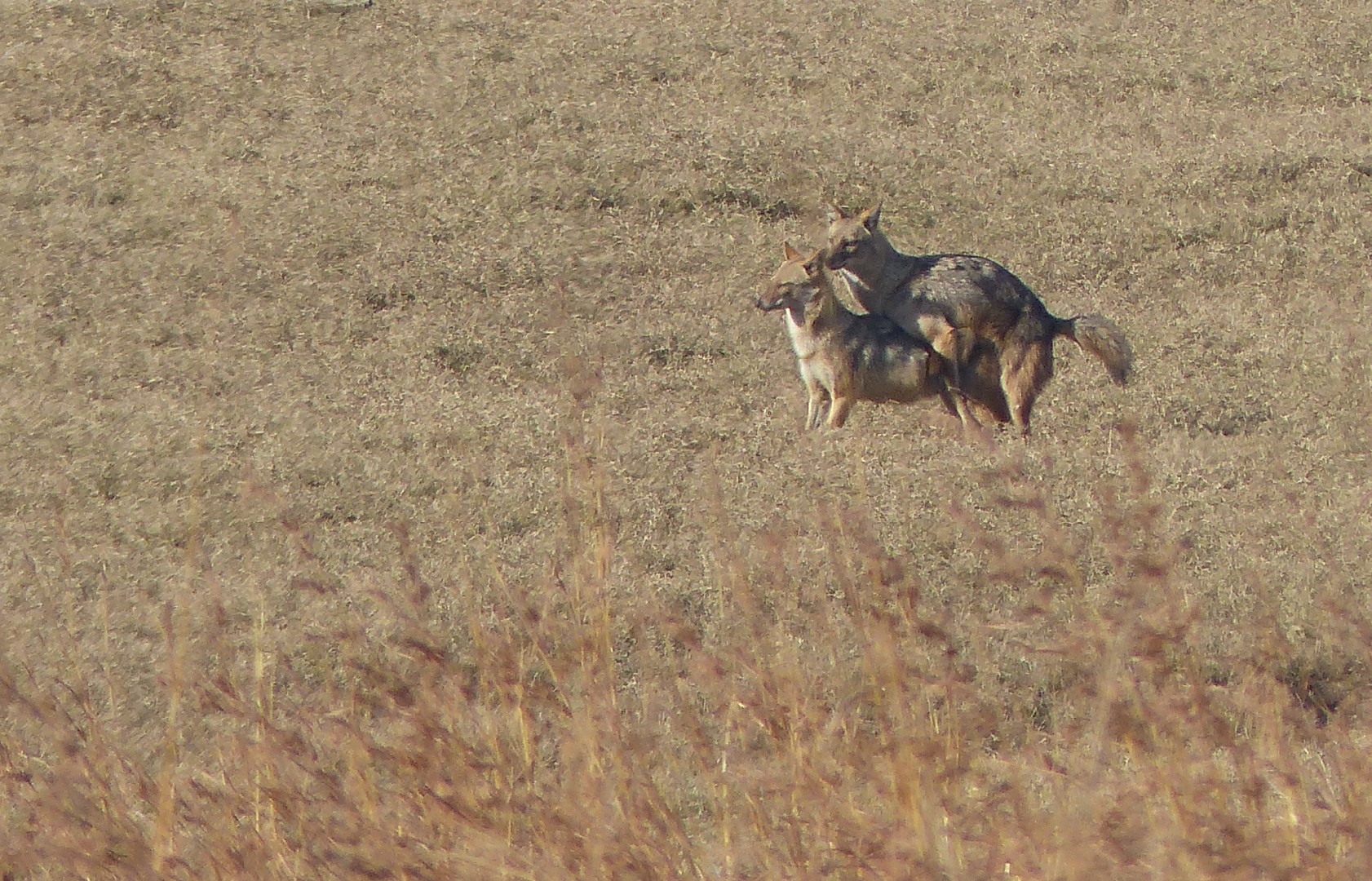Golden jackal
A species of Wolves jackals and allies, Also known as Asiatic jackal Scientific name : Canis aureus Genus : Wolves jackals and allies
Golden jackal, A species of Wolves jackals and allies
Also known as:
Asiatic jackal
Scientific name: Canis aureus
Genus: Wolves jackals and allies
Content
Description General Info
 Photo By Eeshan Sonak , used under CC-BY-SA-4.0 /Cropped and compressed from original
Photo By Eeshan Sonak , used under CC-BY-SA-4.0 /Cropped and compressed from original Description
The golden jackal is similar to the gray wolf but is distinguished by its smaller size, lighter weight, more elongated torso, less-prominent forehead, shorter legs and tail, and a muzzle that is narrower and more pointed. The legs are long in relation to its body, and the feet are slender with small pads. Males measure 71–85 cm (28–33 in) in body length and females 69–73 cm (27–29 in). Males weigh 6–14 kg (13–31 lb) and females weigh 7–11 kg (15–24 lb). The shoulder height is 45–50 cm (18–20 in) for both. In comparison, the smallest wolf is the Arabian wolf (Canis lupus arabs), which weighs on average 20 kg (44 lb). The skull is most like that of the dingo, and is closer to that of the coyote (C. latrans) and the gray wolf (C. lupus) than to that of the black-backed jackal (C. mesomalas), the side-striped jackal (C. adustus), and the Ethiopian wolf (C. simensis). Compared with the wolf, the skull of the golden jackal is smaller and less massive, with a lower nasal region and shorter facial region; the projections of the skull are prominent but weaker than those of the wolf; the canine teeth are large and strong but relatively thinner; and its carnassial teeth are weaker. The golden jackal is a less specialized species than the gray wolf, and these skull features relate to the jackal's diet of small birds, rodents, small vertebrates, insects, carrion, fruit, and some vegetable matter. Occasionally, the golden jackal develops a horny growth on the skull referred to as a "jackal's horn", which usually measures 1.3 cm (0.51 in) in length and is concealed by fur. This feature was once associated with magical powers by the people of Sri Lanka. The jackal's fur is coarse and relatively short, with the base color golden, varying seasonally from a pale creamy yellow to a dark tawny. The fur on the back is composed of a mixture of black, brown, and white hairs, sometimes giving the appearance of the dark saddle like that seen on the black-backed jackal. The underparts are a light pale ginger to cream color. Individual specimens can be distinguished by their unique light markings on the throat and chest. The coats of jackals from high elevations tend to be more buff-colored than those of their lowland counterparts while those of jackals in rocky, mountainous areas may exhibit a grayer shade. The bushy tail has a tan to black tip. Melanism can cause a dark-colored coat in some golden jackals, a coloring once fairly common in Bengal. Unlike melanistic wolves and coyotes that received their dark pigmentation from interbreeding with domestic dogs, melanism in golden jackals probably stems from an independent mutation that could be an adaptive trait. What is possibly an albino specimen was photographed in southeastern Iran during 2012. The jackal moults twice a year, in spring and in autumn. In Transcaucasia and Tajikistan, the spring moult begins at the end of winter. If the winter has been warm, the spring moult starts in the middle of February; if the winter has been cold, it begins in the middle of March. The spring moult lasts for 60–65 days; if the animal is sick, it loses only half of its winter fur. The spring moult commences with the head and limbs, extends to the flanks, chest, belly and rump, and ends at the tail. Fur on the underparts is absent. The autumn moult occurs from mid-September with the growth of winter fur; the shedding of the summer fur occurs at the same time. The development of the autumn coat starts with the rump and tail and spreads to the back, flanks, belly, chest, limbs and head, with full winter fur being attained at the end of November. 
General Info
Lifespan
10-12 years
Diet
Golden jackal is chiefly a carnivorous species, predominantly hunting small mammals, particularly rodents and rabbits. It also consumes reptiles and insects, infrequently supplementing its meals with palm dates, wild figs, and other fruits when available.
Appearance
Golden jackal is a medium-sized carnivore with a streamlined, slender body covered in short, coarse fur. Its coat is mainly golden-reddish to greyish, with a black-tipped tail. Commonly, a vertical streak runs down the front of the face. Adults showcase a mane, with males usually having a more prominent one than females. Notably, the size, color, and patterning may vary across geographic regions.
Behavior
Golden jackal is a nocturnal carnivore with social, territorial behavior. It forms monogamous pairs or cooperative groups, marking territory with urine and feces. Hunting primarily small mammals, it also scavenges and caches surplus food. As an adaptable species, golden jackal survives in diverse habitats, from cities to deserts.
Population
Increasing